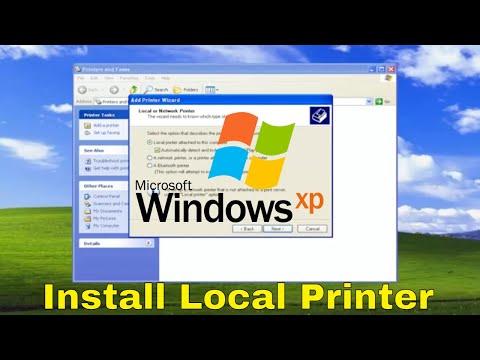I remember the day vividly. I had just bought a new local printer for my home office, a seemingly simple upgrade that I assumed would be a breeze. My goal was to have it connected to my computer running Windows XP, a version of the operating system that was older but still functional for my needs. As I unpacked the printer, I was filled with anticipation, but little did I know that this task would soon become a test of my patience and problem-solving skills.
The first hurdle came when I realized that the printer’s installation guide was not exactly clear about Windows XP. The instructions were generic and assumed a more modern system. I felt a sense of frustration building as I struggled to follow the steps, which seemed to be tailored for a different operating system altogether. My first instinct was to consult the internet for a guide specific to Windows XP, but the resources I found were either outdated or too technical for my comfort.
I decided to dive in and tackle the issue step-by-step. The printer had a USB connection, which I plugged into my computer, expecting it to be automatically recognized. Windows XP did detect new hardware, but it did not seem to find the appropriate drivers on its own. The “Found New Hardware Wizard” popped up, but I was greeted with a series of prompts asking for drivers that I did not have. It was clear that I needed to find the right drivers to proceed.
My next step was to go to the manufacturer’s website. After some searching, I located the drivers for my specific printer model. However, the website only had drivers for Windows Vista and Windows 7, not for Windows XP. I felt a pang of anxiety—was I going to be stuck without the ability to print because of this discrepancy? Determined not to give up, I searched for older versions of the drivers or alternative solutions compatible with XP.
Eventually, I stumbled upon a forum where someone had faced a similar issue. They had managed to use a slightly older version of the driver, one that wasn’t listed on the manufacturer’s main site but was archived in a repository. I downloaded it with a mix of hope and skepticism. With the file in hand, I returned to the “Found New Hardware Wizard,” and when prompted, I directed it to the location of the downloaded driver.
The wizard began installing the driver, and I held my breath, praying that this would solve the problem. When the installation completed, I tested the printer by sending a simple document to print. To my immense relief and satisfaction, the printer roared to life and began churning out the pages. It was a moment of triumph, a testament to my perseverance and resourcefulness.
Having successfully installed the printer, I knew I needed to ensure it remained functional. I configured the printer settings and tested various print jobs to confirm everything was working as expected. The process had been more challenging than I had anticipated, but the satisfaction of overcoming the issue was well worth it. In the end, I learned that while technology can sometimes be daunting, the ultimate solution often lies in a combination of patience, research, and a willingness to explore alternative options.
Reflecting on the experience, I felt a newfound confidence in my ability to tackle tech-related issues. This was not just about installing a printer; it was about confronting a challenge head-on and finding a way through it. The lesson I took away was that with determination and a bit of ingenuity, even seemingly small problems can be resolved, and the sense of achievement that comes with solving them is incredibly rewarding.
